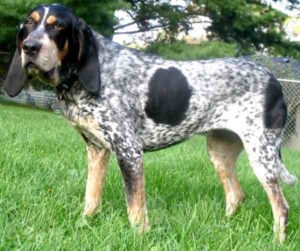Before discussing more about dog breeding business, let me first describe what actually dog breeding is. ‘Dog breeding is actually the practice of mating selected male and female dogs with the intention of maintaining or producing specific qualities and characteristics’.
Characteristics of the offspring are determined by natural selection, when the dogs reproduce without human intervention. While ‘dog breeding’ refers specifically to the artificial selection of dogs, in which the dogs are intentionally bred by their owners. [1]
Successful breeding of dogs relies on the science of genetics. So, the breeder with a knowledge of canine genetics, health, and the intended use for the dogs attempts to breed suitable dogs.
Before starting dog breeding business, you need to know as much as possible about this business. Because breeding a dog is a serious commitment, and there are numerous factors to consider for ensuring the health of the mother and her pups, and also happy future owners.
So, if you want to be successful in this business, then you should know how to breed dogs, and study in depth before starting this business.
How to Start Dog Breeding Business?
As we have mentioned above, breeding dogs is a serious task. So, you should know as much as possible about this before starting. Breeding of dogs has a long history. Humans have maintained populations of useful animals around their places of habitat since pre-historic times.
Over these millennia, domesticated dogs have developed into distinct types, or groups, such as livestock guardian dogs, hunting dogs, and sighthounds. To maintain these distinctions, humans have intentionally mated dogs with certain characteristics to encourage those characteristics in the offspring.
Through this process, hundreds of dog breeds have been developed. Artificial selection in dog breeding has influenced behavior, shape, and size of dogs.

Today, the dogs are raised mainly as pets. And most of the dog breeders used to breed their dogs for producing the ongrowing demand of pets. It’s a large market now.
And there are huge opportunities for you to earn some extras from this dog breeding business. Here we are trying to describe more information about starting your dog breeding business.
Make a Proper Plan
First of all, make a proper plan and work according to the plan. A clear plan is very important for establishing a successful business. A clear and proper plan will help you to map out the specifics of your business and discover some unknowns. Consider the following aspects while making a good plan for your new business.
- Determine the type of dogs you want to start breeding. There are different roles for dogs from family pets, comfort dogs for elderly patients, police dogs, rescue dogs, children who are hospitalized, security dogs and border patrol dogs.
- Determine the costs involved in opening and operating a dog breeding business. The startup costs for this business can be substantial. Startup costs includes but not limited to purchasing female and male dogs or pay stud fee, food costs, vet costs, equipment cost and accommodation costs. Along with this, there are business registration costs, licensing costs and also insurance fees. Consider all these before starting.
- There are also some ongoing expenses for this business. Such ongoing expenses include purchasing food for dogs, vet costs for puppies and mothers. And depending on your area, there may have an organization registration fees. For example, if you want to start your business in the United States, then each litter must be tested by a veterinarian and should be registered with the AKC.
- Determine your target market before starting this business. Most of the dog breeders used to make money by selling the puppies to the interested buyer.
- Depending on the breed, each puppy is sold for between $500 and $3000, or even more. Well bred, popular and rare dogs are generally sold at very high price.
- Try to figure out the amount of profits you can make from this business. Exact amount of profits from dog breeding business depends on numerous factors. Exact amount of profits depends on the quality of the dogs, and how many litters it produces in a year. A low budget breeder who doesn’t have good quality dogs may sell their dogs for about $800 each. While a high end breeder may have just 4 litters a year, but sell their dogs for $2500 each. If each litter had 6 dogs, then the business would have an annual revenue of $60000. For the low budget breeder need more than 12 litters of 6 dogs for making the same amount of high end breeder.
- In your plan, also include how you can make more from your dog breeding business. You can enter your dogs in shows and winning for making more profits.
- Have a contract drawn up that outlines the purchase agreement when a puppy is sold.
- Choose a good name for your business. It will help you to brand your business and extend the business further.
Form a Legal Entity
Establishing a legal business entity such as an LLC prevents you from being personally liable if your good breeding business is sued. There are many business structures to choose from. (including Corporations. LLC’s. And DBA’s.). You should also consider using a registered agent service to help protect your privacy and stay compliant.[2]
Tax Registration
Depending on your area, you will need your business to be registered for taxes before starting this business. For registering for taxes, you will need to apply for an EIN (it’s really very easy, simple and free).
Obtain Required Permits and Licenses
Depending on your area, you will need to obtain necessary permits and licenses for starting your dog breeding business. Because, failure to acquire necessary permits and licenses can result in hefty fines, or even cause your business to be shut down.
Get Your Business Insurance
Insurance is highly recommended for all business owners. Insurance may be a legal requirement in your area if you hire employees, workers compensation.
Establish Web Presence
Establishing your web presence will help your customers to learn more about your business and the products and services you offer. Make a website for your business and also use social media for attracting new clients or customers.
How to Start Breeding Dogs
After being prepared for starting this business, it’s time to breed your dogs. Here we are trying to describe more information about breeding your dogs.
Estrous Cycle
Depending on the breeds, the dogs generally reach puberty within their 6 to 24 months of age (at which age a female dog will start having an estrous cycle). There are 4 stages of estrous: proestrus, estrus, diestrus and anestrus. A dog in estrus (also known as being ‘in heat’) can become pregnant during this 3 to 21 day period.
Breeding Methods
There are two methods for breeding your dogs. The breeding can take place naturally or through artificial insemination. Here we are shortly describing about both methods.
Artificial Breeding Method
An artificial insemination breeding method may be carried out if a natural breeding is either impossible or undesirable. In case of artificial insemination method, a vet collects sperm form a male, and uses a syringe equipped with a catheter to deliver the sperm to the female’s uterus.
Then the bitch is kept quiet for about an hour to help ensure the sperm reach their destination. If all goes well, fertilization will take place and a litter will develop.
Natural Breeding Method
A natural breeding takes place between the stud and the bitch with little or no human interference. Generally, a male mounts the bitch from behind and commences to mate with her. The sperm are mainly delivered during the period of the ‘tie’, but some sperm may be delivered before that moment.
The sperm will then race toward the ovum in an effort to be the first one to fertilize the eggs. And once the sperm fertilizes an eggs, no other sperm can penetrate it. The fertilized eggs then implant themselves at intervals along the uterine horns where they will continue to develop until it’s time for delivery.
Gestation and Pregnancy
Gestation in dogs is 63 days in length, if measured from the day of ovulation (no matter which breeding method is used). Although, it is difficult to determine the exact date of ovulation (errors are often made in calculating gestation period).
Delivery
Delivery can happen as early as 58 days gestation, but pups born this early may be slightly premature and are usually identified by the bright pink skin tone of their furless paws. Most of these pups will survive quite well, as long as they are given ample opportunity to nurse.
Dog breeding is a serious business. So you should learn all the ins and outs related to the the basics of this business. This includes genetics, health testing, the estrus and gestation cycles, whelping puppies and caring for the newborn puppies. Breeding a dog and continuing on the traditions of your favorite breed can be immensely rewarding. But for being a responsible breeder, you should do all of your homework first for making sure your efforts are successful. Hope this guide has helped you! Good luck and may God bless you!







This was really helpful, thanks for having this available for us to read.
kind regards and God bless,
from Riverside Pedigrees Nz